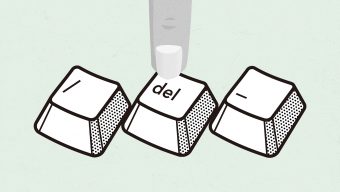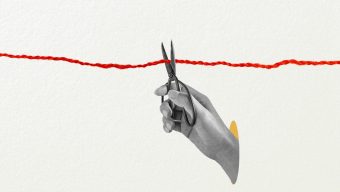Work has changed and some things that we now take for granted and consider essential in our daily lives—Facebook, Twitter, and YouTube, for example—didn’t even exist until about a decade ago. All these communication channels entailed an innovation. The dynamic is always the same: first you need a good idea; then you create it; finally, you test and validate the idea. The problem with innovation is that people think of it as something that happens far away, in Silicon Valley. In reality, innovation is largely based on your own attitude and creativity.
Disruptive innovation
Disruptive innovation—a concept introduced by Clayton Christensen—means finding new attributes for a different market. One example is the introduction of shampoo designed for the lower-income population in India, who previously only used soap. The single-use shampoo sachet took India by storm. This idea was neither high-tech nor investment-heavy; all it took was a new way of thinking. With this move, shampoo manufacturers gained millions of new customers without having to invest in technology or change their product. All they had to do was introduce an inexpensive format for people who thought they couldn’t afford shampoo. To change a market, you need creativity and the courage to be different.
Cheap smartphones are another disruptive innovation. This product puts smartphone technology within the reach of people in developing countries who, until recently, thought they would never be able to afford it.
Another example is the aerospace industry, where the biggest challenges have to do with regulation. This is the case for drones—a technology that is sure to change our lives. The conditions and regulations affecting drone flight vary from one country to the next. Faced with this obstacle, drone-makers must overcome the challenge of regulation by using the soft skills of persuasion to reassure government authorities.
Companies are used to competing for the same customers, but if one company manages to create a new market, it can be the leader without having any competition. To do this, the company must differentiate itself and stay relevant to the market niche in order to remain successful.
Hard skills are obviously the foundation, but soft skills are the essence, the difference between success and failure. And the interesting thing about soft skills is that they don’t really cost any money.
Soft skills for leadership
Putting a man on the moon required intelligence, courage, resources, adaptability, understanding, leadership, many years of research, funding, training, vision, ambition, and a deadline—in this case, the space race between the Americans and the Soviets. In other words, a large part of the achievement had nothing to do with the hard skills of technique and technology, but rather with soft skills.
It’s true that traditional education has always focused on technical skills, but soft skills are essential if you want to compete and create new things. We therefore need to change the way we think about education. To be a leader, you need soft skills. According to the Carnegie Institute of Technology, 85% of a person’s financial success is due to personality and ability to communicate, negotiate and lead, whereas only 15% is due to technical knowledge. Soft skills are what give you an advantage.
Hard skills are obviously the foundation, but soft skills are the essence, the difference between success and failure. And the interesting thing about soft skills is that they don’t really cost any money. A growing number of companies require their professionals to have an entrepreneurial attitude. This is something we’ll need to remember in the future, when most technical activity is being performed by robots. Soft skills will allow us to differentiate ourselves in terms of creativity.
Today, one of a leader’s tasks is to create an environment where everyone can flourish and give the best of themselves.
Innovation starts with motivation
Communication and team motivation play a key role in success and innovation. In this dynamic, it is important to value every achievement—no matter how small—before you can aim higher. If I ask you to jump over a wall, you’ll say you can’t do it. But if I ask you to take a single step, it seems more doable. Small changes by everyone involved in a process or project can have a multiplier effect. Moreover, big changes are very risky and might not work—and if they don’t, the effect is counterproductive. Strategies should focus on promoting small changes, generating understanding and trust, and building on this foundation.
Gandhi once said: “Be the change you want to see in the world.” The leadership model has changed greatly. Today, one of a leader’s tasks is to create an environment where everyone can flourish and give the best of themselves. Internal motivation—that which resides within people—is very important. Therefore, people need to perceive progress, do meaningful things, feel valued, act autonomously, and see themselves as stakeholders in the project.
© IE Insights.











